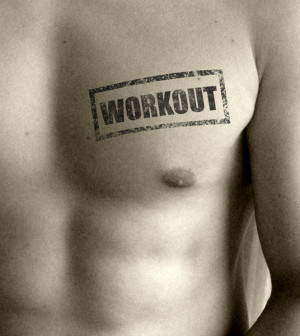- Skip Storing This Everyday Product in the Fridge Door
- Green Tea + B3 Pairing May Boost Brain Health
- Navigating Your Midlife Crisis: Embracing New Possibilities
- City Raccoons Showing Signs of Domestication
- Mapping the Exposome: Science Broadens Focus to Environmental Disease Triggers
- One Week Less on Social Media Linked to Better Mental Health
- Your Brain Changes in Stages as You Age, Study Finds
- Some Suicide Victims Show No Typical Warning Signs, Study Finds
- ByHeart Formula Faces Lawsuits After Babies Sickened With Botulism
- Switch to Vegan Diet Could Cut Your Greenhouse Gas Emissions in Half
U.S. Teens Less Sweet on Soft Drinks

American teens are turning their backs on soft drinks, says a new government survey that shows soda consumption among youth declined by almost a third in just two years.
Instead, bottled water has become the drink of choice for many, the researchers found.
“Over the past 15 years, a great deal of research has demonstrated that sugar drinks promote weight gain and obesity, diabetes and heart disease,” explained Michael Jacobson, president of the Center for Science in the Public Interest. “That evidence has fueled campaigns to reduce consumption.”
These efforts have led to sugary drinks being banned from schools, government agencies reducing or eliminating sugar-sweetened beverages from cafeterias and vending machines, and adoption of sales taxes on sugary drinks, said Jacobson, who was not involved in the survey.
Even the beverage industry has joined up. In 2014, the three largest soda companies — Coca-Cola, PepsiCo and the Dr. Pepper Snapple Group — pledged to cut the amount of calories that Americans get from sugary drinks by one-fifth over the coming decade.
The government survey, conducted recently by the U.S. Centers for Disease Control and Prevention, revealed that in 2015:
- 20 percent of students reported drinking a sugar-sweetened beverage one or more times per day during the previous week, down from 27 percent in 2013 and 34 percent in 2007.
- 26 percent of teens said they had not consumed any sugary soda at all in the previous seven days, up from 22 percent in 2013 and about 19 percent in 2007.
Public campaigns appear to be convincing kids that they shouldn’t guzzle soda loaded with empty calories, experts said.
The banning of sugary sodas from vending machines has also played a large role in reducing soft drink consumption, said Dr. Ronald Tamler. He is medical director of the Mount Sinai Clinical Diabetes Institute in New York City.
“If you go to Mount Sinai Hospital, you literally cannot get a sugar-sweetened soda from the vending machine,” Tamler said. “Increasingly, there are schools that have the same model, so children find it more difficult to get sodas.”
In the meantime, water appears to have become a popular alternative to soft drinks.
The CDC survey found that in 2015, nearly 74 percent of students drank one or more glasses of water per day during the previous week, and 64 percent said they drank two or more glasses of water.
A recent industry report from the Beverage Marketing Corp. revealed that bottled water consumption grew 120 percent in 15 years, between 2000 and 2015. At the same time, soft drink consumption fell by 16 percent.
But Tamler is concerned that students might be picking up other sugar-loaded drinks as an alternative to soda — energy drinks, fruit juice or sweetened coffee products among them.
“The question is, are they swapping out sodas for something else?” he said. “Are they switching to other high-calorie beverages such as sugar-sweetened iced tea? That’s something that requires further drilling into the data.”
The Beverage Marketing Report indicated that people likely aren’t substituting another sugary beverage for soda. It found that between 2000 and 2015, individual Americans decreased their consumption of all alternatives to water.
In the United States, consumption of these alternatives — including soft drinks, fruit juice, energy drinks, sports drinks, bottled tea and coffee, and all forms of milk — dropped from 95.7 gallons per person in 2000 to 80.1 gallons per person in 2015. Overall consumption dropped from 27 billion gallons to 25.8 billion gallons.
According to Jacobson, “Overall, there’s been a 27 percent per-capita decline in carbonated sugar-drink consumption since 1998. A one-third decrease for Coke, and a 54 percent decrease for Pepsi. It’s especially gratifying and important to see major decreases among high school students.”
Jacobson believes that soft drinks are on the way out, although he shares Tamler’s concerns about sugar-loaded alternatives.
“I think that soda consumption will continue to decline, because it’s increasingly not cool to drink soda, though energy drinks are still growing in popularity,” he said.
Kristi King, a senior dietitian with Texas Children’s Hospital in Houston, said she’s seen a promising change in the way teens approach their own health.
“As a society as a whole, we’re having more of a focus on being healthier, and we have to give teenagers credit,” said King, a spokeswoman for the Academy of Nutrition and Dietetics. “I’m starting to see a lot more teenagers wanting to take responsibility for their health. I see that on a daily basis here in clinic.”
More information
For more on sugary soft drinks, visit the Harvard T.H. Chan School of Public Health.
Source: HealthDay
Copyright © 2025 HealthDay. All rights reserved.










